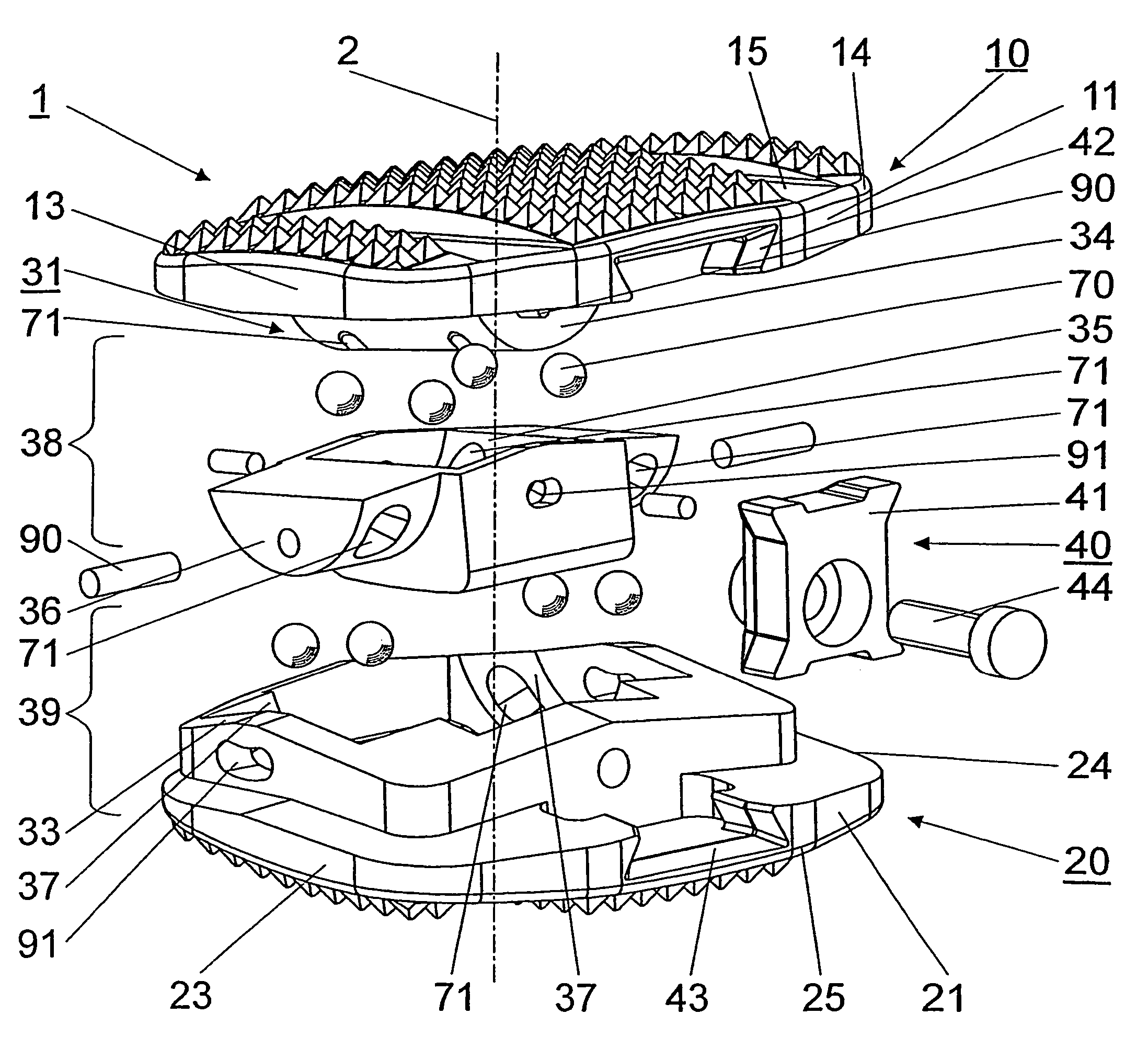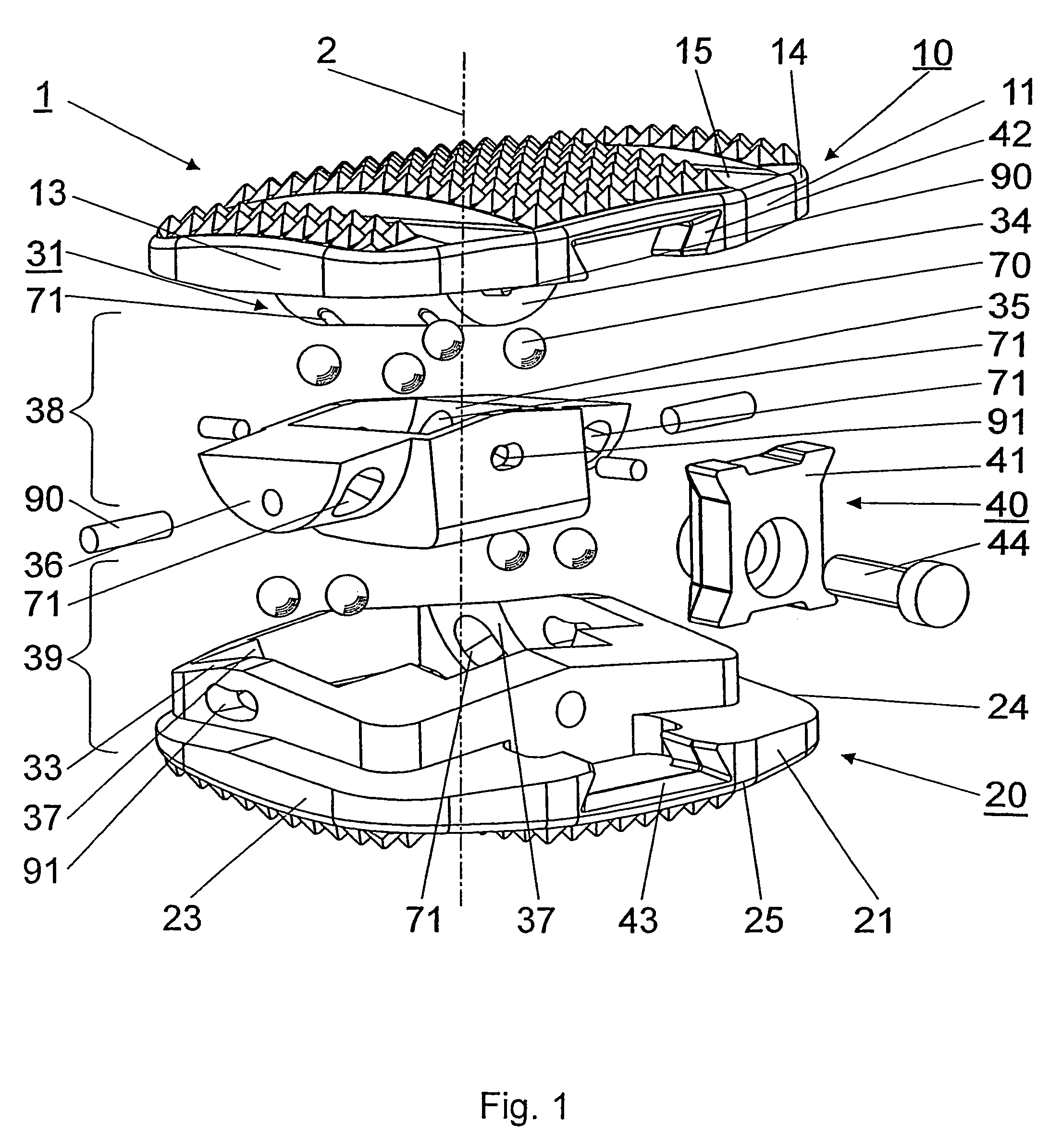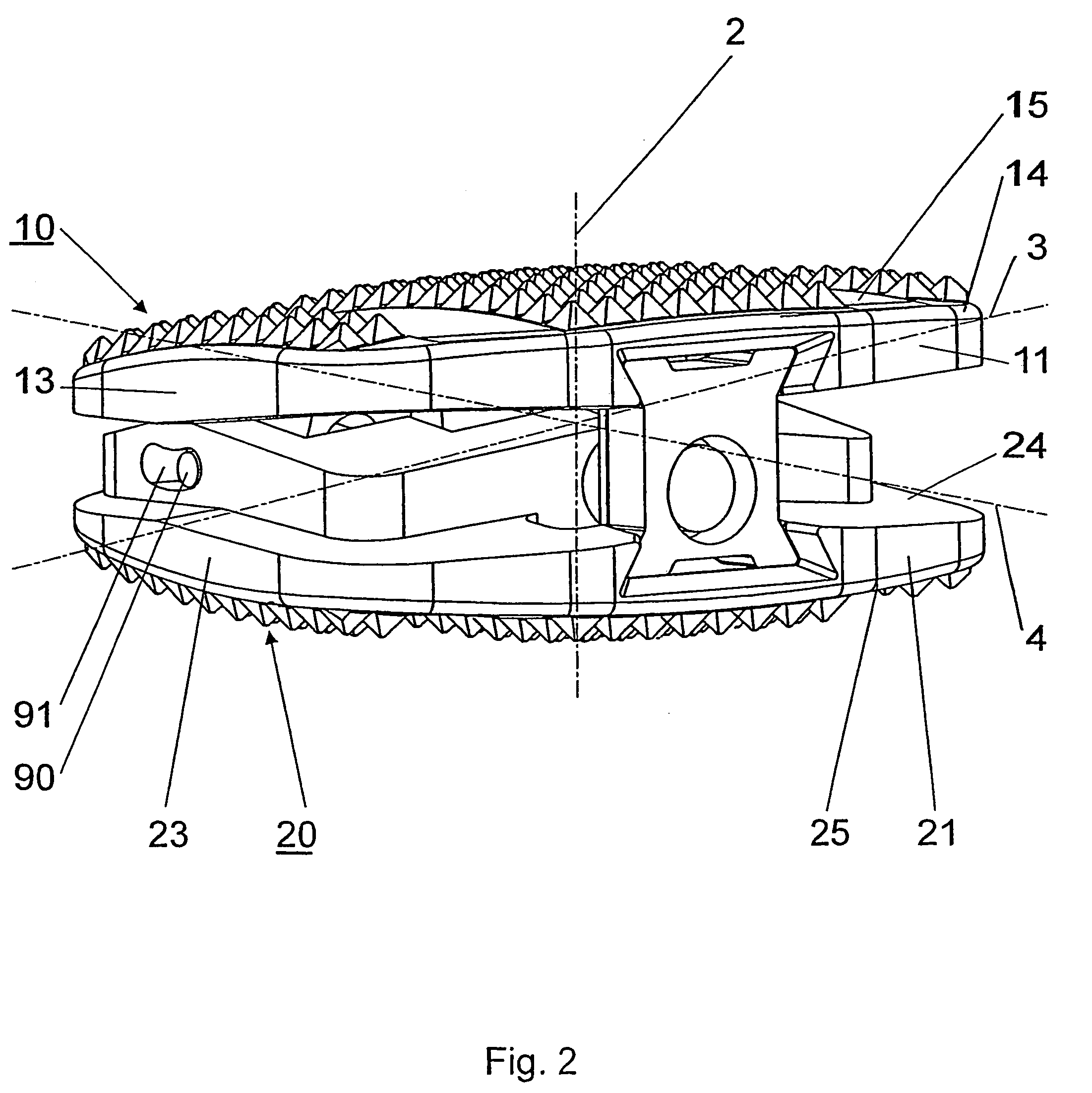Intervertebral implant with joint parts mounted on roller bodies
a technology of intervertebral implants and roller bodies, which is applied in the field of intervertebral implants, can solve the problems of pain for patients, wear on the surface, abrasion and resistance, etc., and achieve the effect of facilitating the insertion into the intervertebral spa
- Summary
- Abstract
- Description
- Claims
- Application Information
AI Technical Summary
Benefits of technology
Problems solved by technology
Method used
Image
Examples
Embodiment Construction
[0037]FIG. 1 and FIG. 2 show an embodiment of the intervertebral implant 1 according to the invention, which comprises an upper section 10 with a top apposition surface 15 arranged perpendicular to the central axis 2 for laying on the base plate of an adjoining vertebral body, a lower section 20 with a lower apposition surface 25 arranged perpendicular to the central axis 2 for laying on the cover plate of the adjoining vertebral body and two joints 38;39. The upper section 10 and the lower section 20 are connected with the joints 38;39 and moveable in relation to each other, whereby the mobility of the upper section 10 relative to the lower section 20 is restricted by a first swivel axle 3 arranged perpendicular to the central axis 2 within an angle range of +10° to −6° and by a second swivel axle 4 arranged perpendicular to the central axis 2 and vertical to the first swivel axle 3 within an angle range of ±7°.
[0038]The two joints 38;39 are realised by three joint elements 31;32;3...
PUM
 Login to View More
Login to View More Abstract
Description
Claims
Application Information
 Login to View More
Login to View More - R&D
- Intellectual Property
- Life Sciences
- Materials
- Tech Scout
- Unparalleled Data Quality
- Higher Quality Content
- 60% Fewer Hallucinations
Browse by: Latest US Patents, China's latest patents, Technical Efficacy Thesaurus, Application Domain, Technology Topic, Popular Technical Reports.
© 2025 PatSnap. All rights reserved.Legal|Privacy policy|Modern Slavery Act Transparency Statement|Sitemap|About US| Contact US: help@patsnap.com



